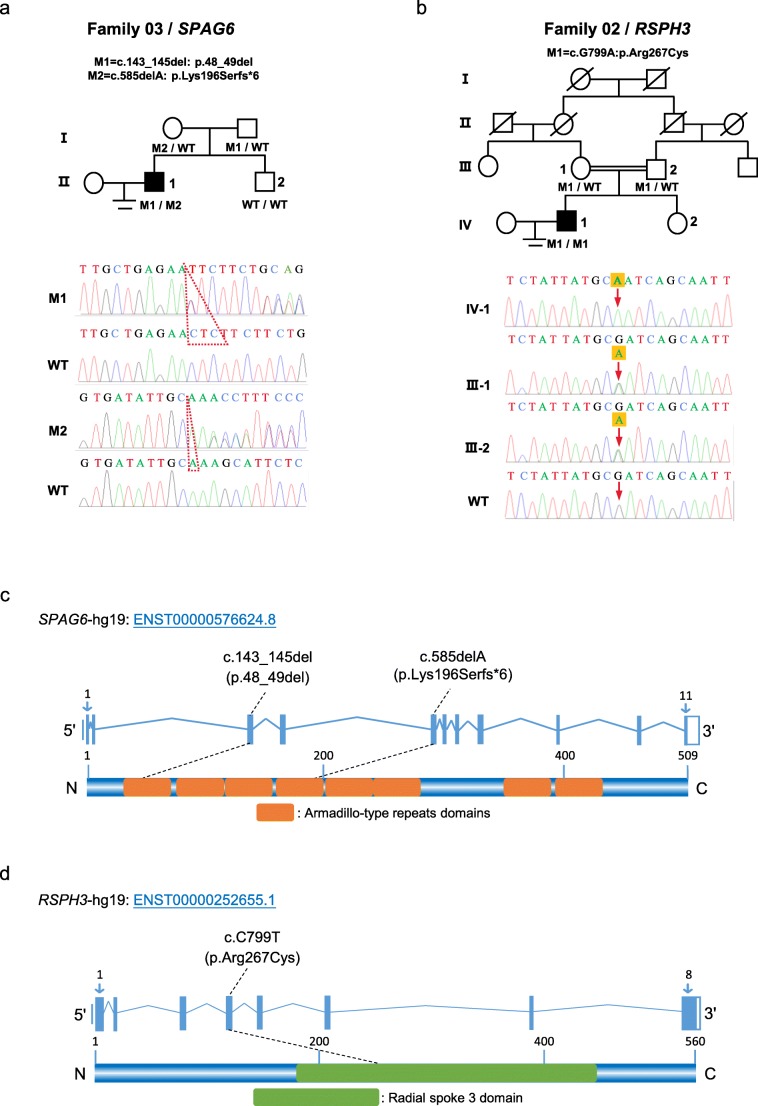Fig. 3.
Mutations in SPAG6 and RSPH3 were identified in Chinese men with PCD-associated asthenoteratospermia. (a and b) Pedigrees of the two families with mutations in SPAG6 or RSPH3. The compound heterozygous mutations in SPAG6 (c.143_145del: p.48_49del, c.585delA: p.Lys196Serfs*6) were identified in a sporadic PCD patient and one novel homozygous nonsynonymous mutation in RSPH3 (c.C799T: p.Arg267Cys) was identified in another patient with consanguineous parents. Sanger sequencing verified the mutations and their parental origins. (c and d) A schematic representation of SPAG6 and RSPH3 protein and the mutations identified in this study. The orange boxes indicate armadillo-type repeats domains of SPAG6 and the green box indicates the radial spoke 3 domain of RSPH3. WT, wild-type

